Real-life people who bought their own towns lock, stock and barrel
Privately-owned towns and the people who bought them
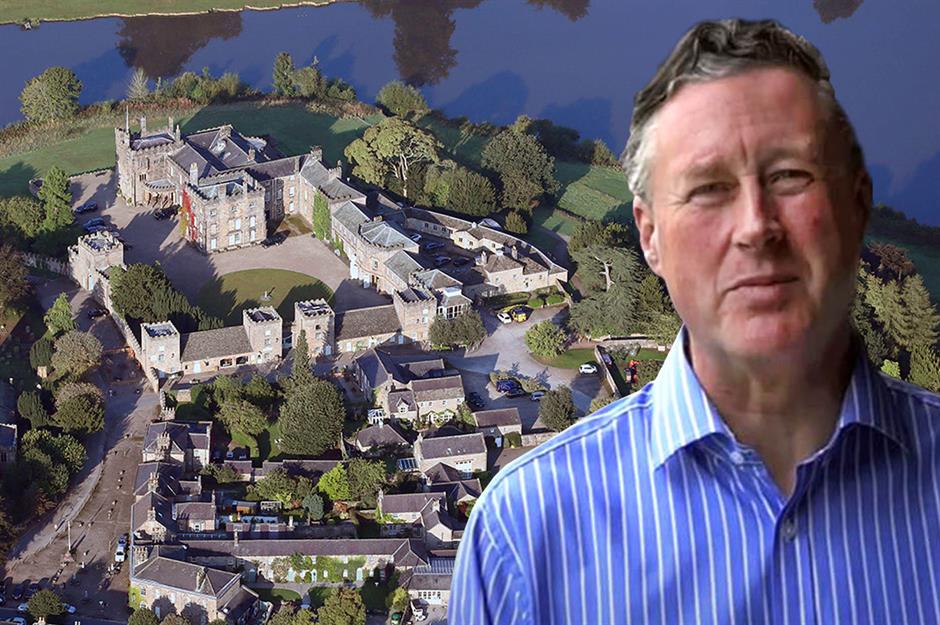
While owning a mansion or fancy equestrian estate is undeniably impressive, telling people you own a town has got to be the ultimate real estate brag – even if it's a Schitt's Creek-style dive.
Believe it or not, plenty of bold big-shots have pulled out all the stops and bagged whole municipalities, scooping up everything from shops and bars to churches.
Click or scroll through to meet plucky people who really did go to town and purchase a whole community...
Sir Thomas Ingilby's Ripley, UK
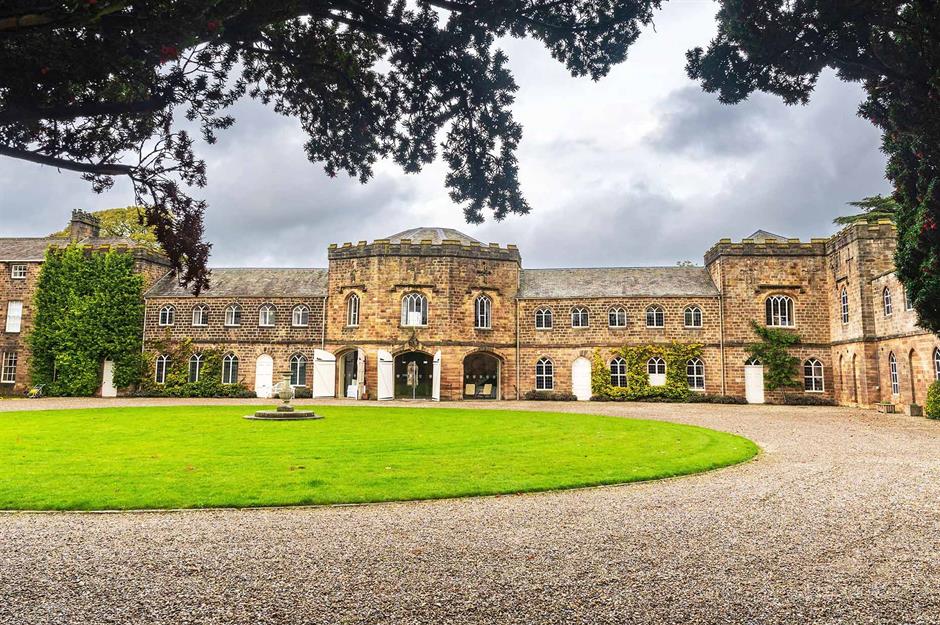
If you fancy yourself as lord or lady of the manor, then there may well be a small village in Yorkshire, England with your name on it.
In the summer of 2024, Sir Thomas (pictured above in this YouTube video) and Lady Ingilby announced their plans to sell Ripley Castle Estate, a parcel which comprises their Grade I-listed 14th-century country house, a beloved village pub and an assortment of stone cottages.
Sir Thomas Ingilby's Ripley, UK
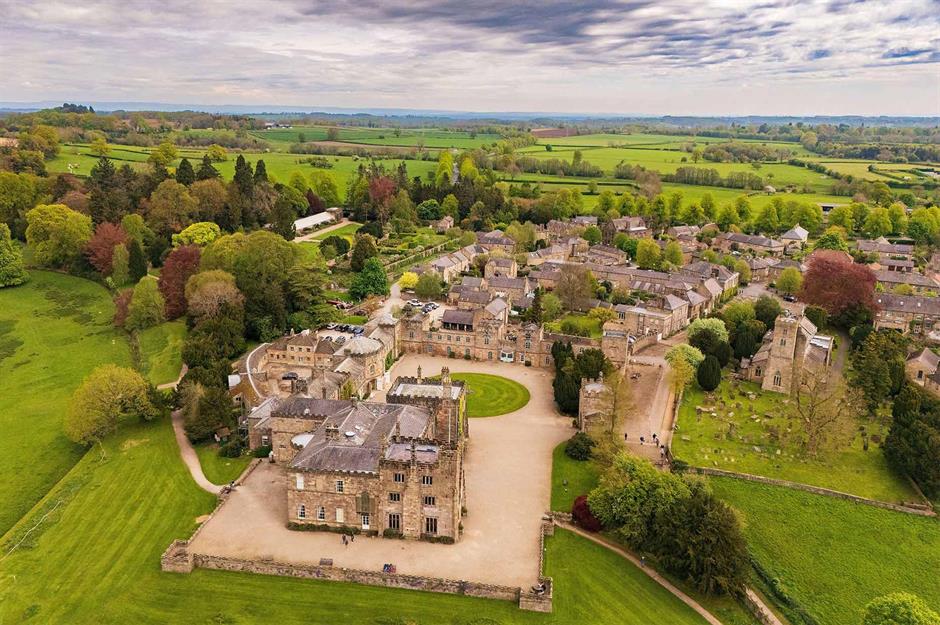
Ripley Castle has been in the Ingleby family since 1308, when it was presented as a dowry to an earlier Sir Thomas Ingilby when he married the heiress, Edeline Thwenge.
The castle has been the Ingilby family seat ever since, but after 24 generations of ownership, the current Sir Thomas has decided to call it quits, planning to place the property on the market with Carter Jonas in October 2024 for an as-yet undisclosed sum.
Sir Thomas Ingilby's Ripley, UK
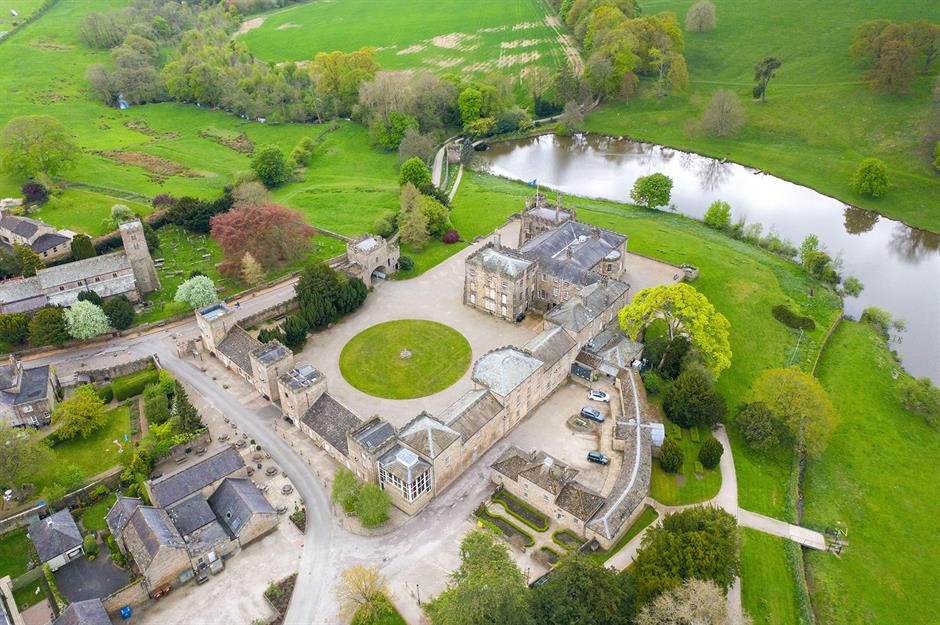
Of course, the ownership of the estate also comes with the stewardship of the local village, an expensive and time-consuming undertaking which has caused much of the country’s land-owning gentry to throw in the towel.
Fortunately, the castle, at least, is in excellent condition, operating as a business in its own right.
Sir Thomas Ingilby's Ripley, UK
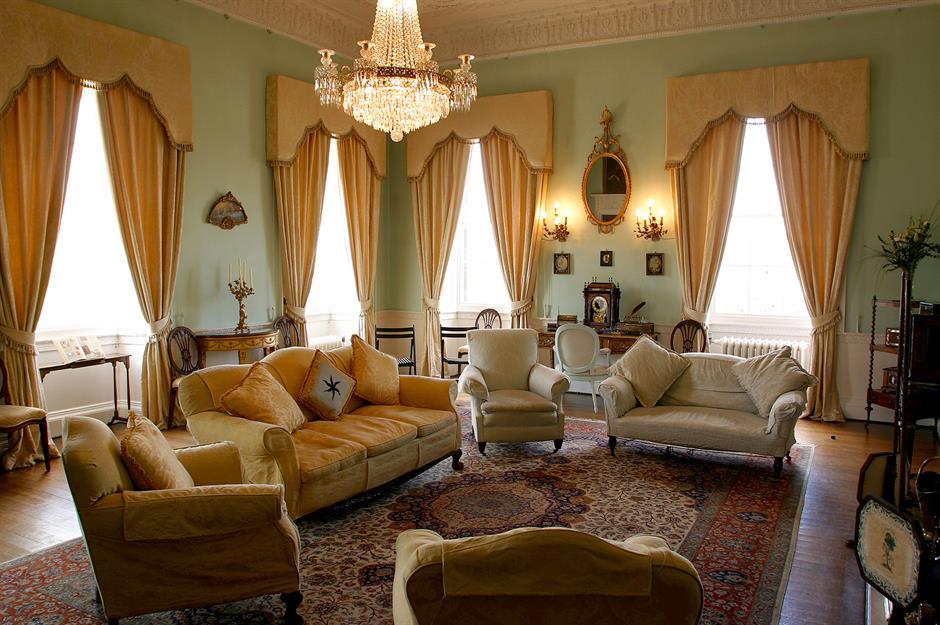
The manor house itself, known as Ripley Castle, is a magnificent Grade I-listed stately home complete with walled gardens, spectacular state rooms and an impressive collection of art and antiquities from its more than 700 years of history.
While technically the Ingleby family home, the castle is also open for tours and events.
If this charming Yorkshire parish, with its 55 Grade II-listed buildings and two Grade I-listed buildings, seems like your cup of tea, then you’ll certainly need both deep pockets and plenty of energy to take it on. We can’t wait to find out who’s up to the challenge!
Stefan Persson's Linkenholt, UK
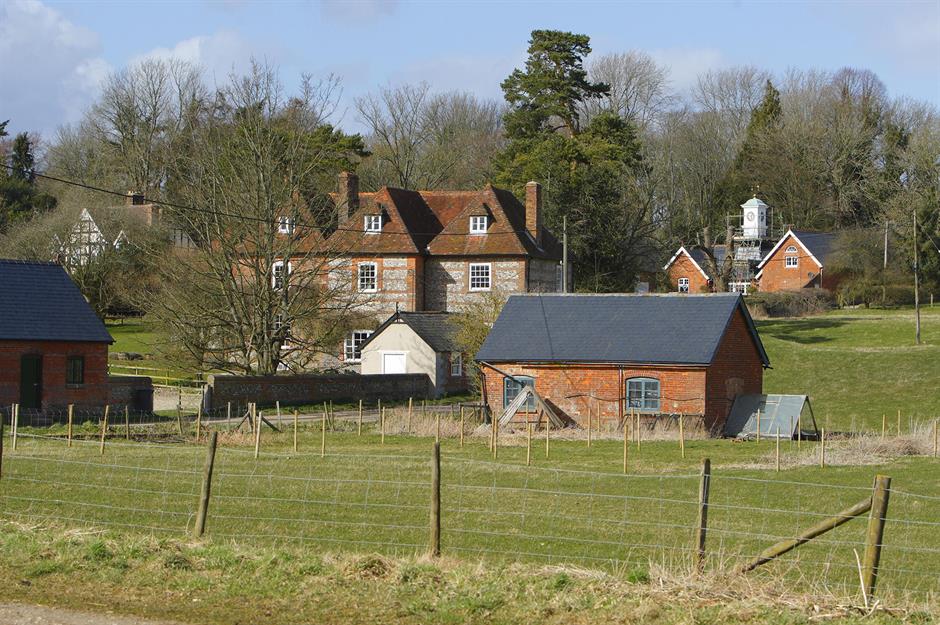
If being lord of the manor doesn’t cut it for you, you can always try buying up the local village as well. Perhaps that’s exactly what Swedish billionaire and former owner of fashion juggernaut H&M, Stefan Persson had in mind when he acquired the sleepy little village of Linkenholt, near Andover in Hampshire, England.
Carl Stefan Erling Persson inherited H&M from his father, Erling Persson, who founded the company, initially known as Hennes & Mauritz, in 1947. The 76-year-old tycoon was at the head of the retail empire, which had an estimated annual revenue of $22.3 billion (£17.6bn) in 2022. He stepped down as chairman in May 2020 after 22 years in the role.
Persson spent around $32.2 million (£25m) to acquire the village in 2009, which includes an enormous Edwardian manor house, as well as 1,500 acres (607ha) of farmland, a 425-acre (171ha) wood, a cricket ground and 21 cottages leased to villagers.
Stefan Persson's Linkenholt, UK
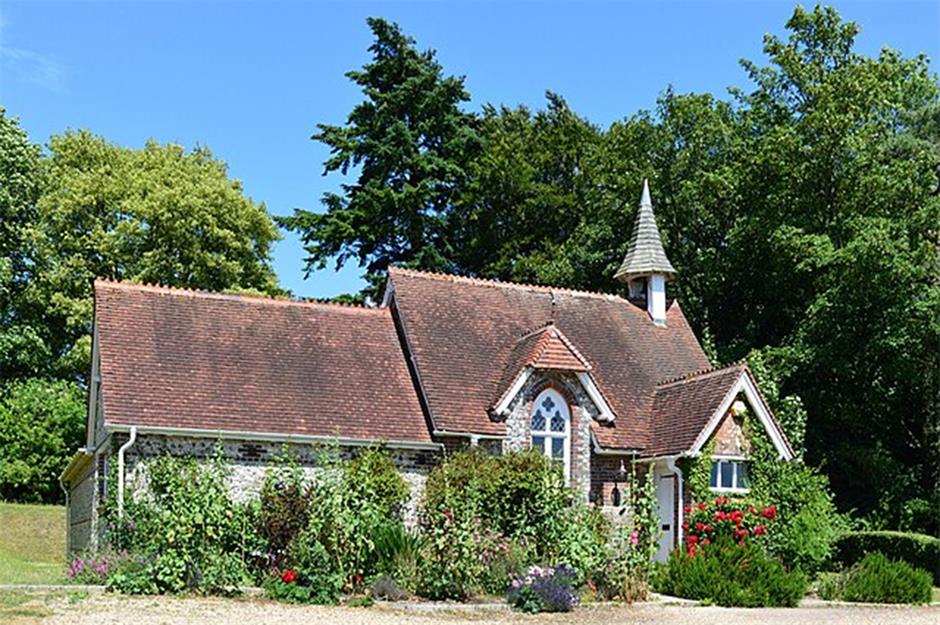
Presson, whose social circle includes the king and queen of Sweden, already owns an 8,500-acre (3,440ha) country estate in nearby Wiltshire. He has an estimated net worth of around $17.5 billion (£13.5bn).
According to Forbes, it was while at a pheasant shoot with the King that Persson fell in love with this corner of the English countryside. The Linkenholt property had most recently been managed by a charitable trust following the death of its previous owner, the English cricketer and racehorse trainer Herbert Blagrave.
Stefan Persson's Linkenholt, UK
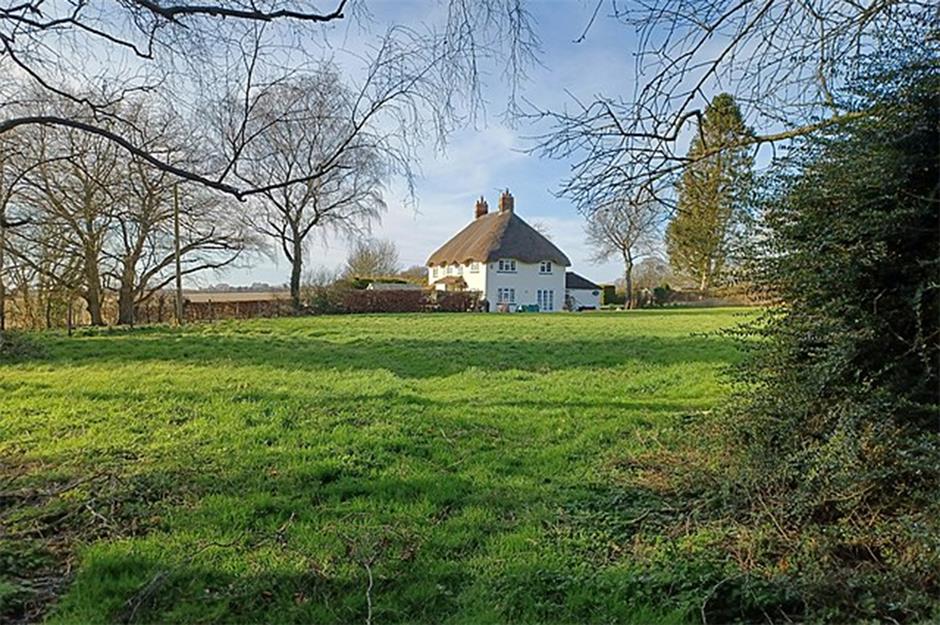
With its collection of stone cottages, village shop, and ancient forge, the village itself is bucolic and has indeed been designated an ‘area of outstanding natural beauty.’
Presson’s acquisition of Linkenholt marked the conclusion of a reportedly tense bidding war with multiple other unnamed potential buyers, according to British newspaper The Guardian.
Presson’s offer came in at the top end of the $29.6 million (£23m) to $32.2 million (£25m) guide price, securing him the 2,000-acre (809ha) estate and all of its rental properties.
Stefan Persson's Linkenholt, UK
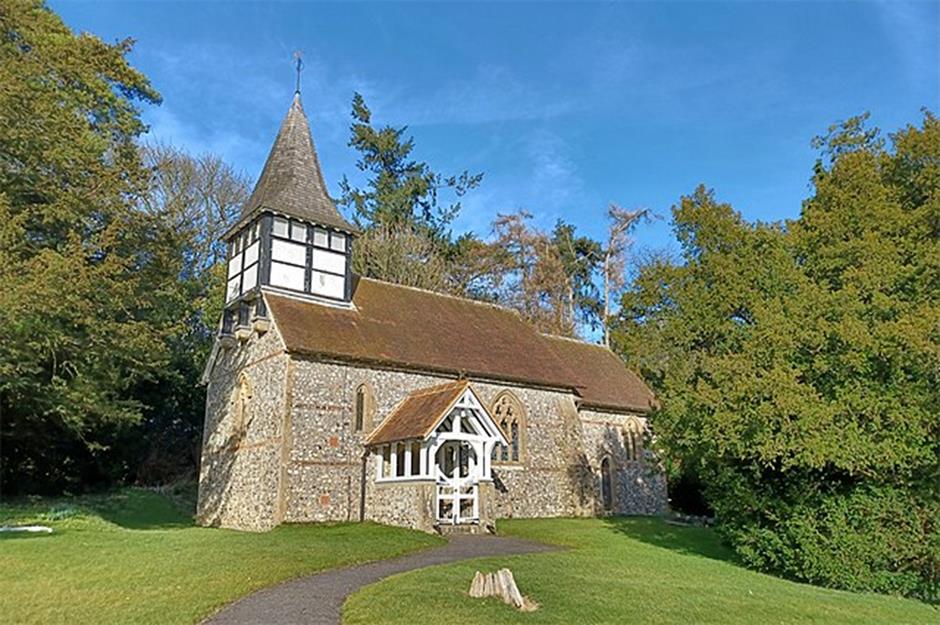
Persson went on in 2013 to buy another 8,700 acres (3,520ha) from the Crown Estate, the property and business arm of the British royal family, on the historic Savernake Estate. Persson is said to live in nearby Ramsbury.
The manor house, meanwhile, reportedly receives mention in the Domesday Book of 1086, and from the reign of Edward the Confessor (1042-66) until the Dissolution of the Monasteries in the mid-1500s was granted by successive monarchs to the abbot and convent of St Peter.
Today, the village church remains St. Peter’s church, which stands on the site of the original convent. It was the only structure not included in the sale. "That," real estate agent Tim Sherston told NBC News at the time, "is owned by God."
Eagle Mountain, USA
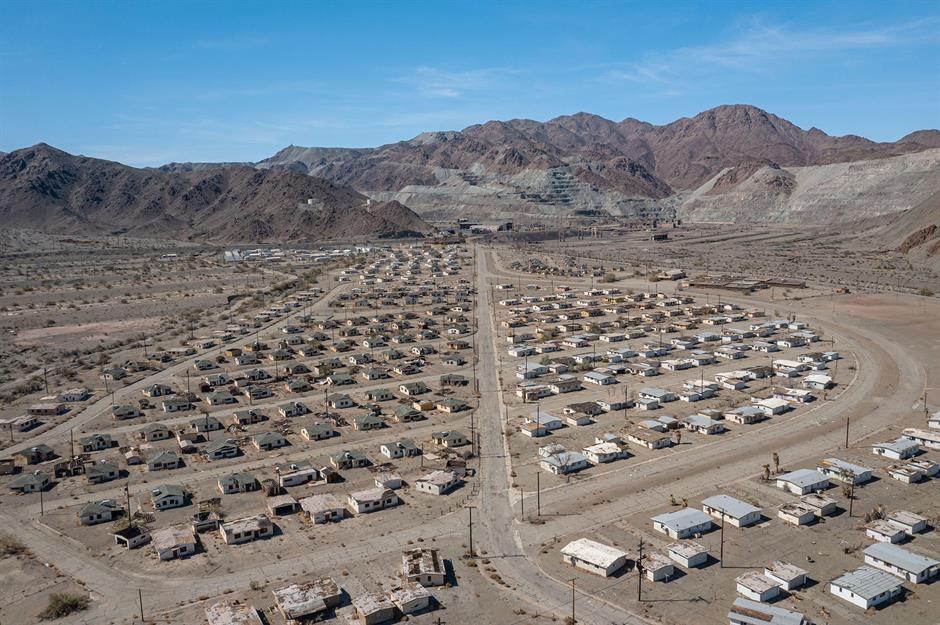
The real estate grapevine is buzzing with news that a mysterious and anonymous buyer has scooped up an old mining settlement for an eye-watering $22.5 million (£17.5m). Due to its remote location and lack of essential supplies, it's been a ghost town for 40 years.
Now rumours are circulating that a transport mogul may have big plans to develop the lonely enclave into a money-making hotspot, but the town's buyer remains a mystery.
Eagle Mountain, USA
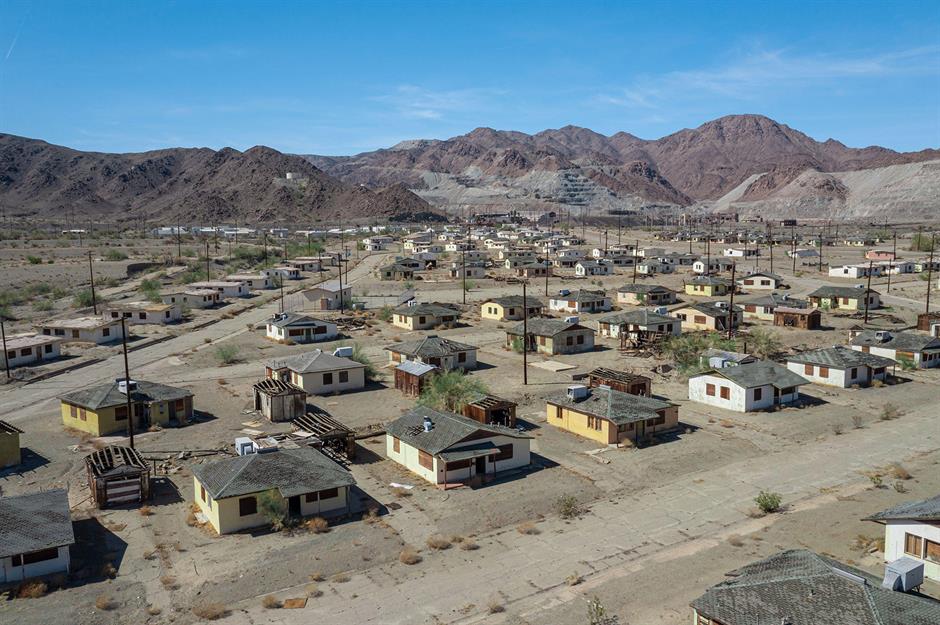
This dusty California ghost town on the outskirts of Joshua Tree National Park was once the bustling community of Eagle Mountain. Formerly a thriving company town, the majority of its citizens were employed at the nearby Kaiser Steel mine.
However, starting around the 1970s, the town began to decline in the wake of substantial staffing cuts at the mine, followed by its ultimate closure in 1983. And the town’s fate only got darker from there…
Eagle Mountain, USA
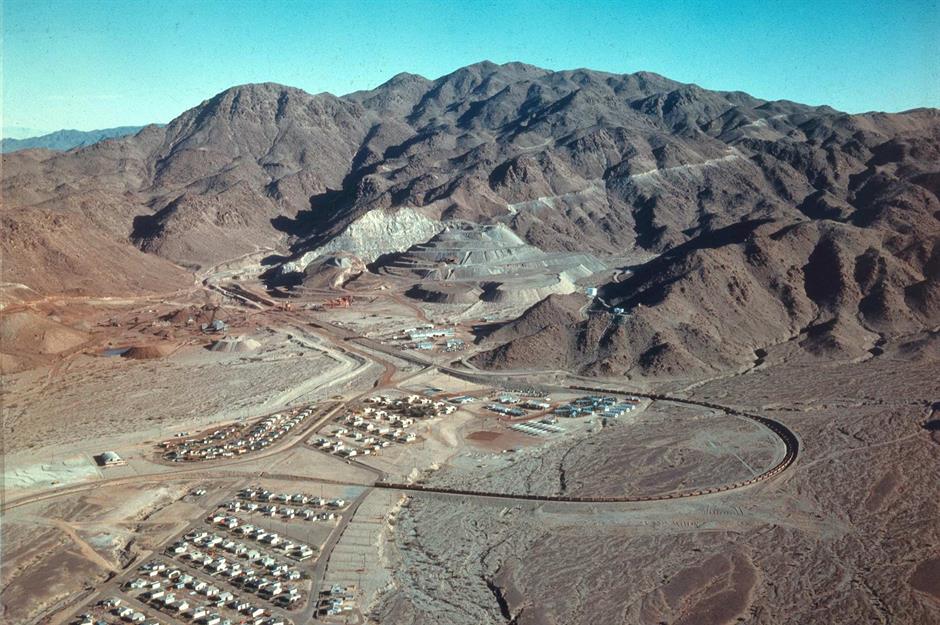
After the mine was shuttered, Eagle Mountain became home to an ill-fated low-security prison called the Eagle Mountain Community Correctional Facility, which opened its doors in 1988.
All of the town’s once-thriving community centres, including its café and bowling alley, were repurposed to house the 438 inmates who were serving time for nonviolent offences such as parole violations. However, all this was brought to a brutal end in 2003, when a violent altercation broke out among the prisoners.
Eagle Mountain, USA

Now, the town is ready to launch its next chapter and was recently purchased by a mysterious buyer doing business under the company name of Ecology Mountain Holdings. Very little information is available about the town’s new owner, save for a business address in Cerritos, California.
However, it is believed that trucking mogul Balwinder S. Wraich may be involved, as in 2021 he bought up more than 1,000 acres (405ha) in the nearby town of Desert Centre.
Wraich co-operates the company Wraich Transport in nearby Fontana, and has spoken previously about his potential plans for developing the currently derelict area. “We’re going to develop a truck stop, gas station and hotel,” he told SFGATE.
Spiegelworld’s Nipton, USA
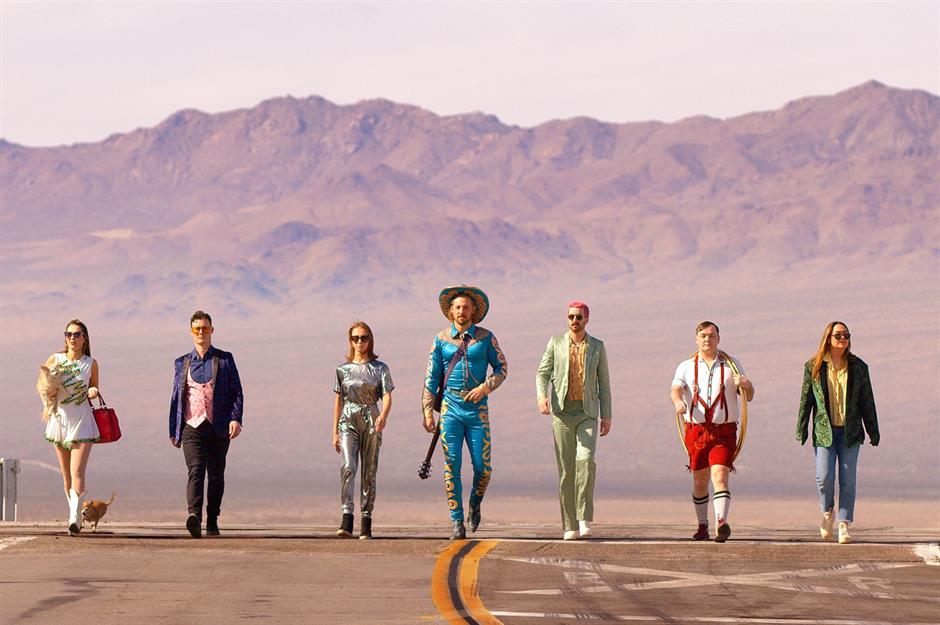
We've heard of the circus coming to town, but how about when they purchase said town? Spiegelworld, a Las Vegas-based performance company known for their adult-themed acrobatics, decided to snap up the Californian town of Nipton for over $2.5 million (£2m) in cash in early 2022.
Ross Mollison, who's known as the company's "Impresario Extraordinaire", explains how the troupe became enamoured with the small town: "When we visited as guests a few years back, we fell in love with the peacefulness, the vast desert vistas, and the fireside chats with freight train drivers, miners and workers."
Spiegelworld’s Nipton, USA
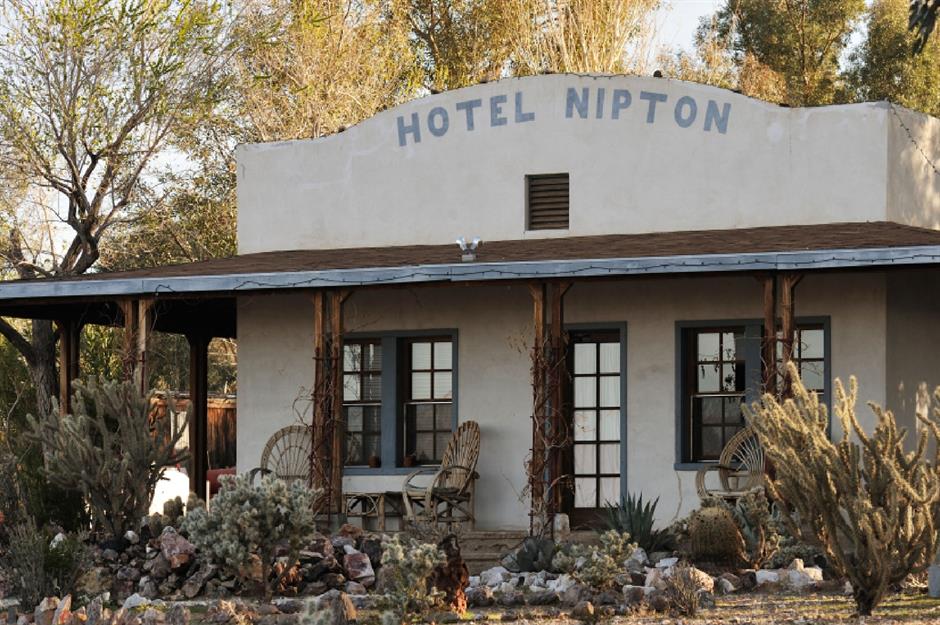
Spanning approximately 80 acres (32ha) on the edge of the Mojave National Preserve, Nipton is a one-hour drive from the bright lights of Las Vegas. It's situated on a freight train railway line, which was previously used as a cattle-loading station for the neighbouring ranches.
Hotel Nipton, pictured here, was built in 1905 and had a famous Hollywood guest—the silent film ‘It Girl’ Clara Bow. Nipton also hosts a town hall, general store, school house, RV park and family homestead. So what does Spiegelworld plan to do with the town and will its rich cultural history live on?
Spiegelworld’s Nipton, USA
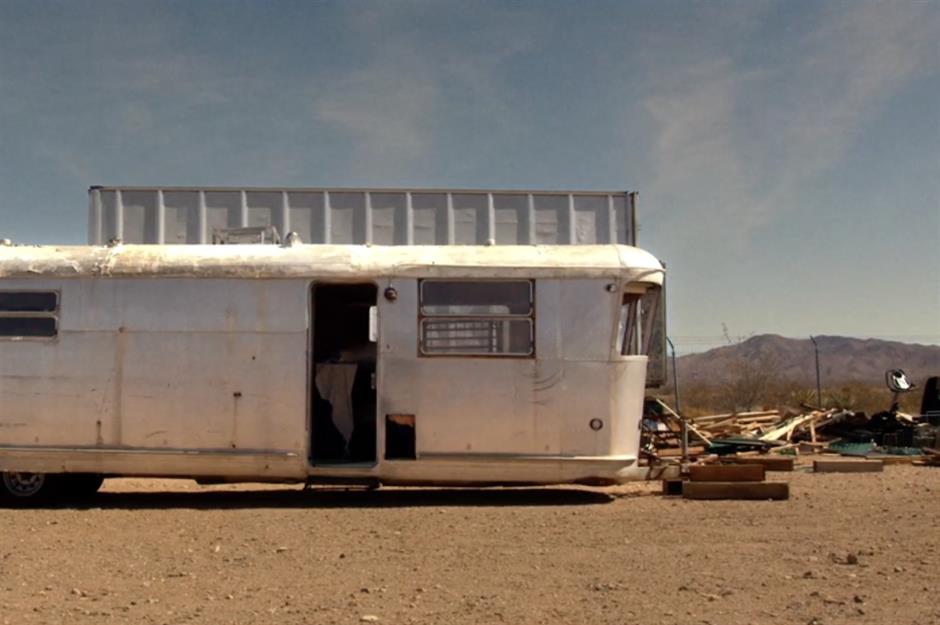
A spokesperson for the company says Spiegelworld has grand plans to turn Nipton into an artist’s retreat. In a statement made to lovePROPERTY, they explain their vision: "It will be a living town where Spiegelworld artists and performers will retreat to dream, create, and undertake unfettered artistic experimentation which will feed into the creation of Spiegelworld’s world-class shows. It will also be a place where visitors and passers-by can have an experience unlike anything else".
In preparation for the circus’s arrival, the company's prop builders Alex and Frank Strebel have been busy clearing the land of debris, including old appliances, piles of mattresses and rusty water heaters.
Spiegelworld’s Nipton, USA
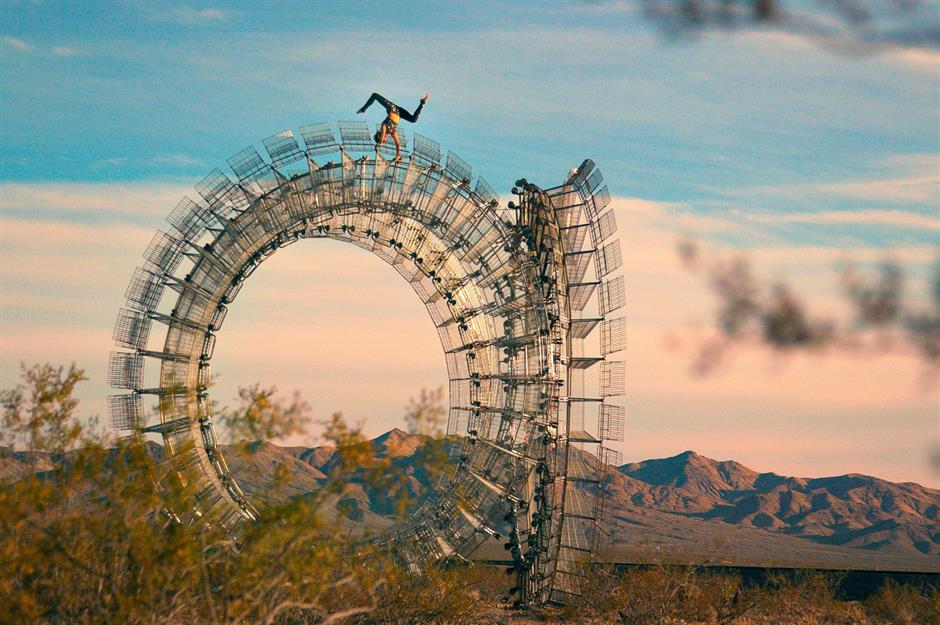
Describing the town as a living history lesson, Alex Strebel told the Wall Street Journal of a bunker in the art yard that reportedly once housed “the dynamite for the mines”.
Mr Mollison and the circus crew have development ideas for the town, including creating underground accommodation in this bunker area, expanding on the existing sculpture park, opening a skydiving club and building a performance area in a grove of eucalyptus trees.
Spiegelworld began by housing a creative team in February 2023, who were developing ideas for a show inspired by the Las Vegas arrival of the 2023 Formula 1 Grand Prix. You can keep up to date with their theatrical plans for Nipton here.
Kim Basinger's Braselton, USA
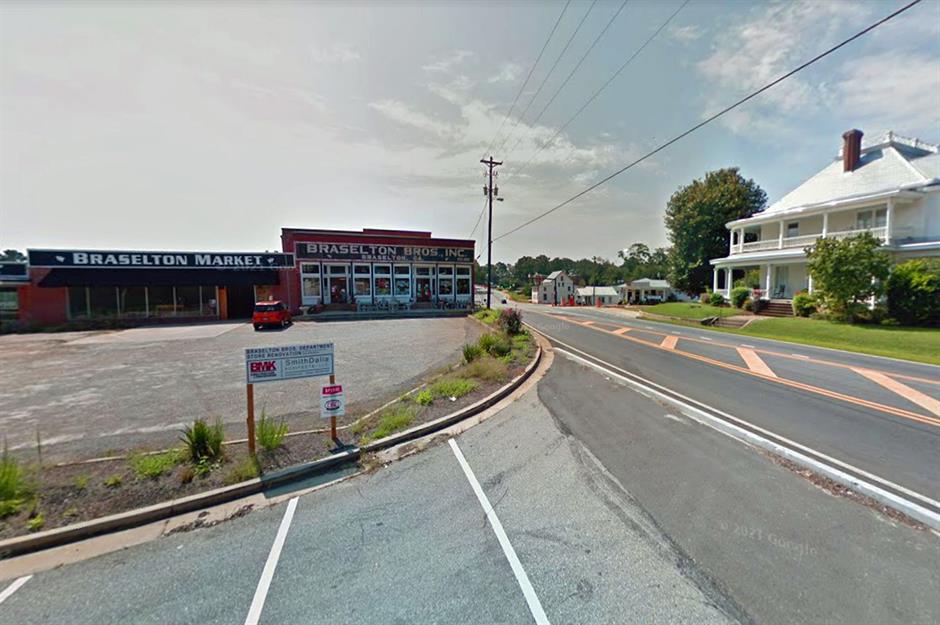
Back in 1989, at the height of her fame, Kim Basinger teamed up with family members and a group of pension fund investors to snap up the town of Braselton in her home state of Georgia.
All in all, the 9 ½ Weeks and Batman star acquired 1,751 acres (709ha), including the local grocery store and bank, a 600-acre (243ha) industrial park and 1,200 acres (486ha) of additional real estate.
The total price paid was $20 million (£15.8m), which translates to $50.7 million (£39.4m) in today's money.
Kim Basinger's Braselton, USA
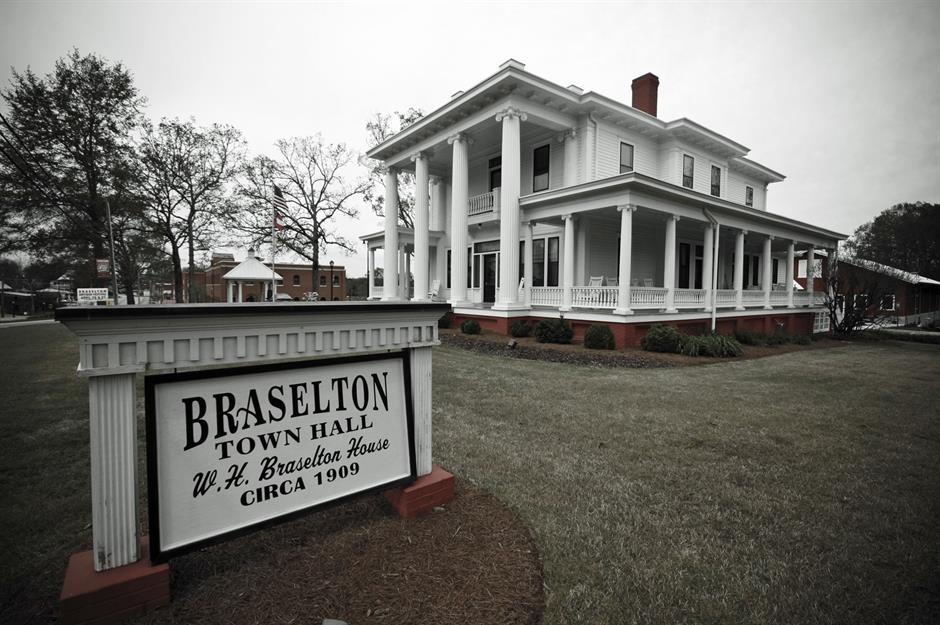
Founded in the late 19th century by Harrison Braselton, who escaped the grind of life as a dirt farmer by marrying the daughter of a wealthy plantation owner, the town contains several evocative turn-of-the-century buildings built by Braselton and his descendants, including the family's eponymous store.
At the time Basinger purchased the town, it was still owned by 24 of Braselton's descendants, who managed to keep hold of their historic homes following the transaction.
Kim Basinger's Braselton, USA
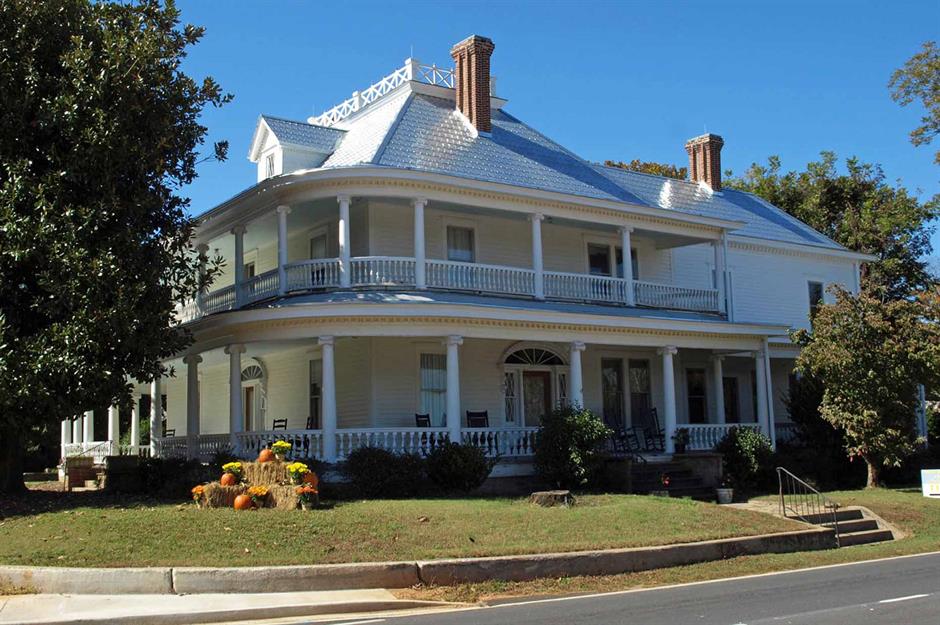
Residents joked that, before the sale, the most exciting activity in the town involved “breadin' chicken” and chasing the fire truck, so the population of 500 was understandably riveted by news of its new owner.
Pictured here is the John O. Braselton House in the town's Historic District. Basinger had lofty (albeit vague) plans to restore Braselton's old buildings and transform the town into a leading tourist attraction with movie studios, a theme park, hotels and swish stores, plus the added appeal of a film festival that would draw visitors from far and wide.
Then the early 1990s recession hit.
Kim Basinger's Braselton, USA
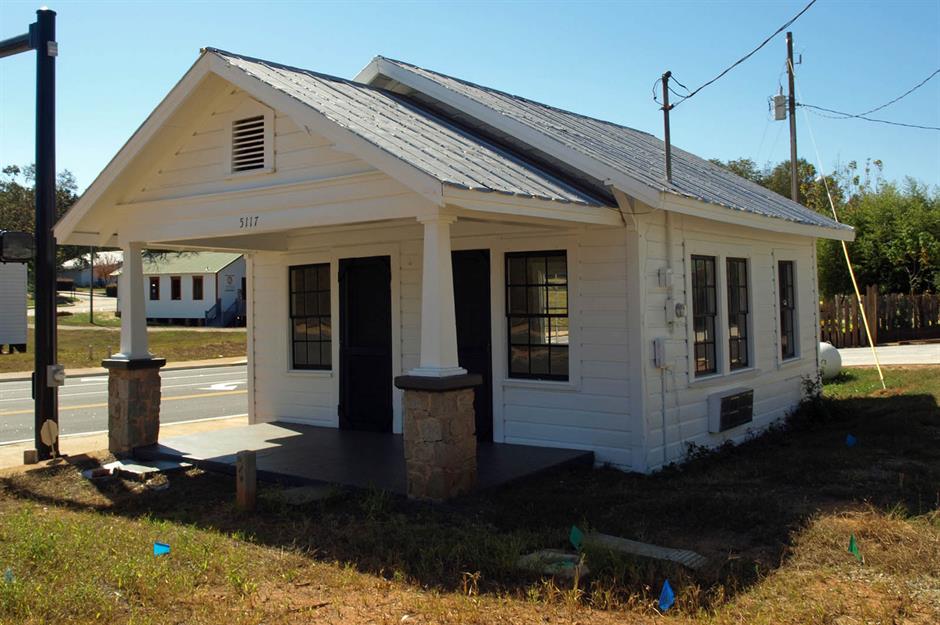
The actress found herself unable to attract further investors, and Braselton was left languishing, with the Chicago Tribune describing it as “the town that Kim forgot”. Facing bankruptcy, Basinger threw in the towel In 1993 and sold the town at a huge loss, netting just $1 million (£777k).
The debacle led to tensions within the Basinger family, and the star went on to tell Barbara Walters that “nothing good” came of buying Braselton.
Johnny Depp's Gassin, France
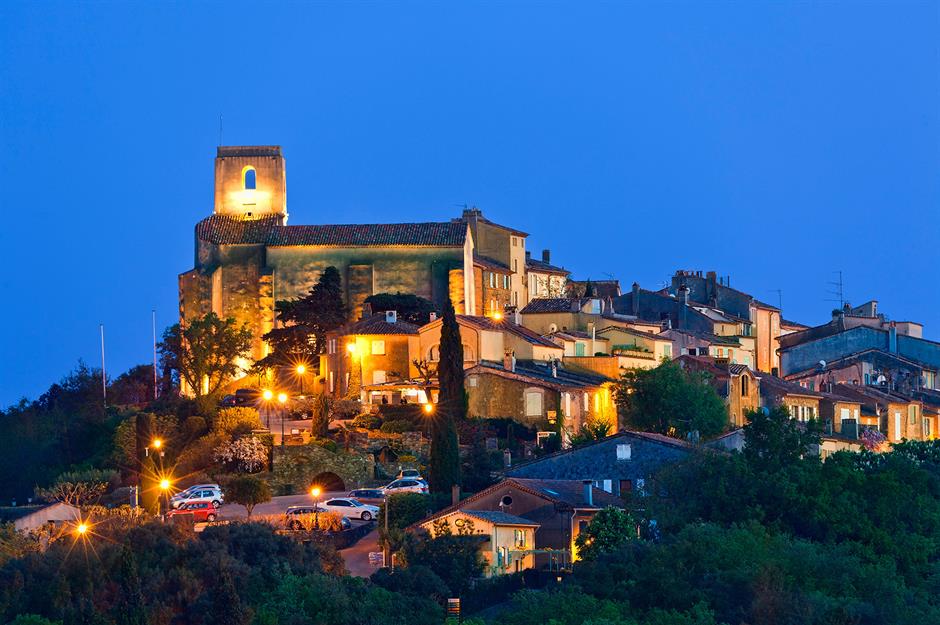
Johnny Depp went for broke in 2001 when he bought Gassin, a charming 37-acre (15ha) hamlet located amid ancient olive groves and 300-year-old oak trees in the hills near Saint-Tropez.
A love nest for the star and his then-partner, Vanessa Paradis, Gassin dates back to before the French Revolution, and had been abandoned sometime during the 20th century.
Johnny Depp's Gassin, France
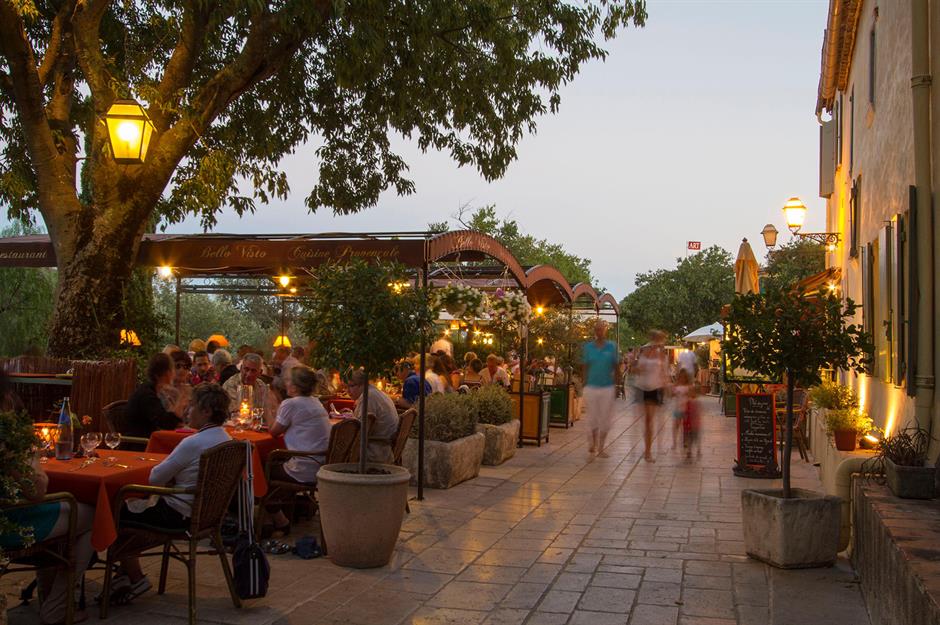
Depp set about restoring the locale's 12 rustic stone and wood-beamed buildings, including its dinky chapel, and ended up splashing a reported $11.4 million (£9m) on the revamp.
In addition to the 4,300-square-foot (399 sqm) main house, Gassin now has six guest homes, bringing the total number of bedrooms to 15, along with heaps of wonderfully quirky amenities.
They include Chez Marceline, a bona fide traditional French bistro kitted out with a proper chef's kitchen and classic zinc bar. On the other side of the bijou village square is the blanchisserie (Gassin's converted laundry), and just off to the north is the characterful repurposed church.
Johnny Depp's Gassin, France
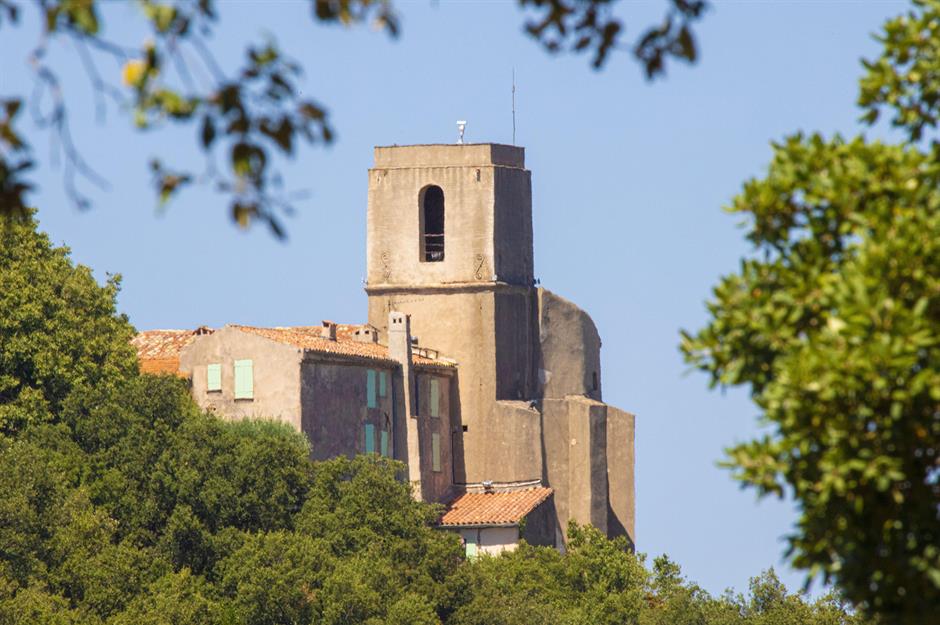
Reinvented as the principal guest house, the former place of worship retains some of its original furnishings, including the wooden confessional, which was turned into a wardrobe.
There's also a covered wagon in the hamlet boasting a kitchen and bathroom; an art studio; a gym; two swimming pools (one of which features a sandy 'beach'); and a skate park with a half pipe.
Johnny Depp's Gassin, France
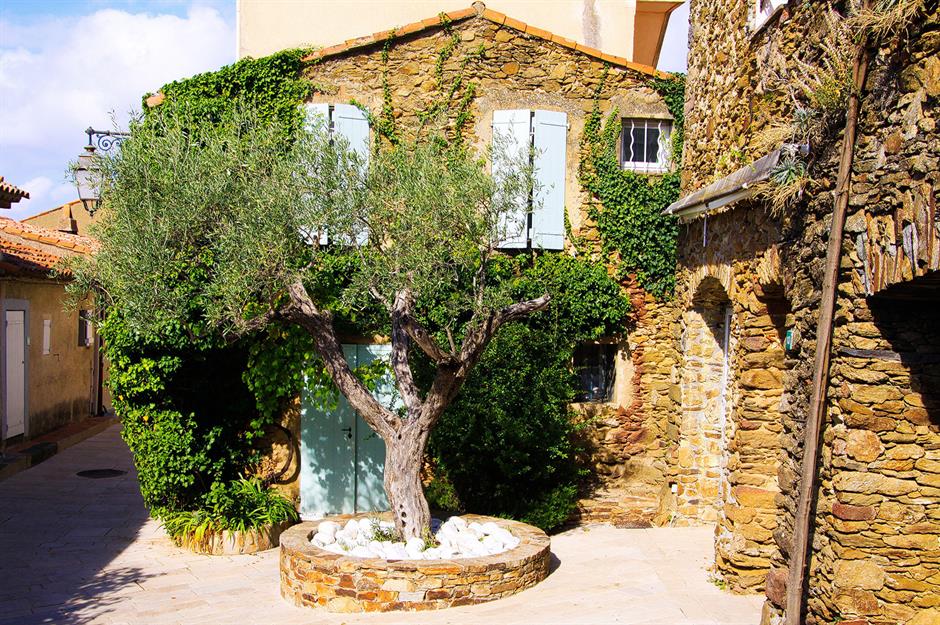
Depp even created a Pirates of the Caribbean-themed wine cave in which to savour his finest vintages. However, plagued by financial and legal problems, the star has been trying to get rid of the bucolic bolthole since 2015, with the asking price fluctuating between around $15 million (£12m) and $63 million (£49.6m).
Unable to find a buyer, it was recently reported by British newspaper the Daily Mail, that Depp plans to give the estate a new lease on life, shelling out yet another fortune to renovate the property.
Mark Cuban's Mustang, USA
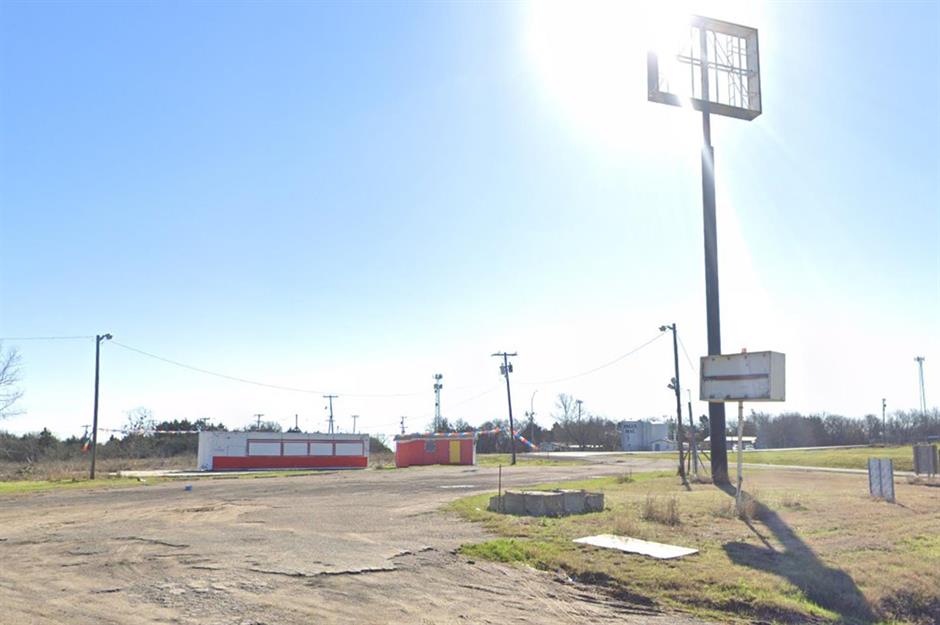
Mark Cuban is no stranger to making quirky investments, having put big bucks into all sorts of kooky businesses that have piqued his interest on the Shark Tank show.
But the billionaire really outdid himself last year by buying the town of Mustang in Texas, which is so rundown it makes Schitt's Creek look upscale.
The 77-acre (31ha) settlement was created in 1973 as a wet town to serve the alcohol needs of surrounding dry communities, but over the years the liquor stores and dance hall were replaced by adult video stores and a strip club called Wispers Cabaret.
Mark Cuban's Mustang, USA
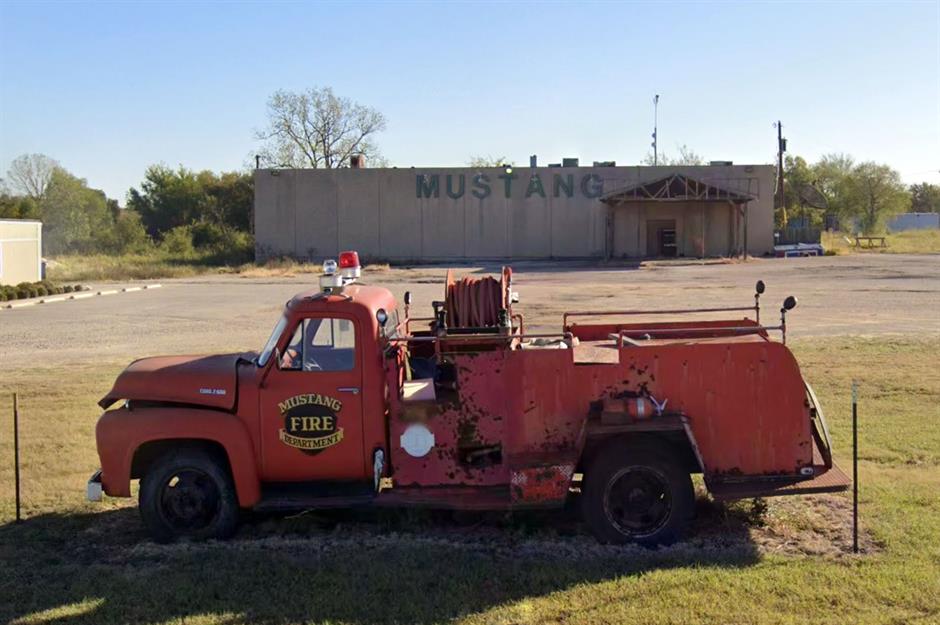
With accommodation consisting of a couple of modest bungalows and a rundown trailer park, one local has called Mustang the place “where all the bad stuff used to happen”. In 2008, Wispers Cabaret (shown here in the background) was the scene of a grisly killing.
A confrontation between a patron and the club's owner and employees turned violent, resulting in the patron's death. The establishment closed soon after, followed by the adult stores.
Mark Cuban's Mustang, USA
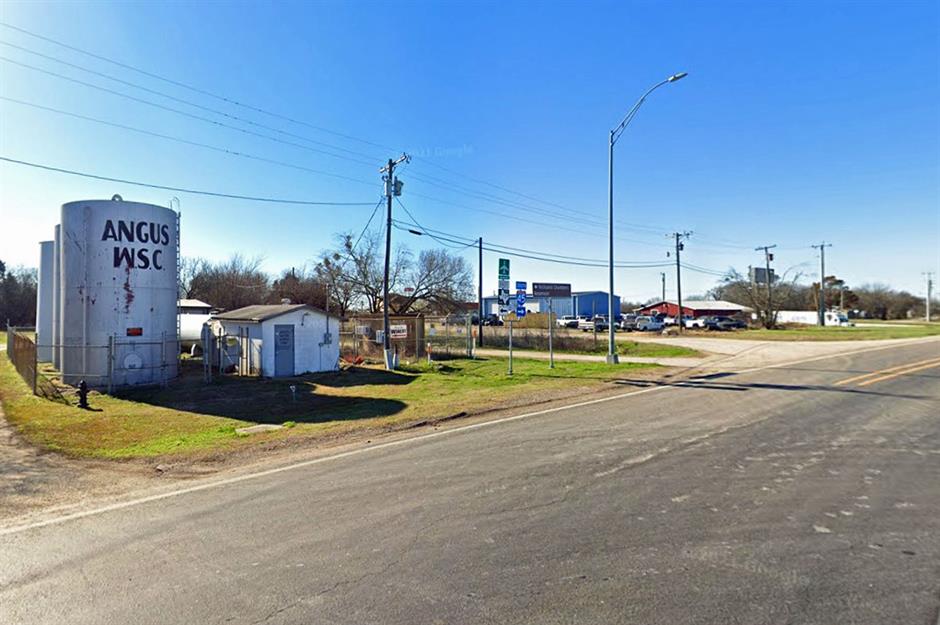
Today, Mustang is pretty much a ghost town, with most of the population of 24 or so who lived there during the late 2000s long gone.
These days, the highlights are restricted to a wastewater treatment facility and volunteer fire department, unless you count the vacant strip club and other derelict buildings.
Mark Cuban's Mustang, USA

This all begs the question: why did Cuban buy such a seedy backwater?
It turns out he did it as a favour for a friend, the former owner Mark Price, who was dying of leukaemia and didn't want to burden his loved ones with having to sell the town, which he'd previously listed for $4 million (£3.2m). Here's hoping Cuban, who bought Mustang for an undisclosed sum, can breathe some life into the ramshackle settlement.
Daniele Kihlgren's Santo Stefano di Sessanio, Italy
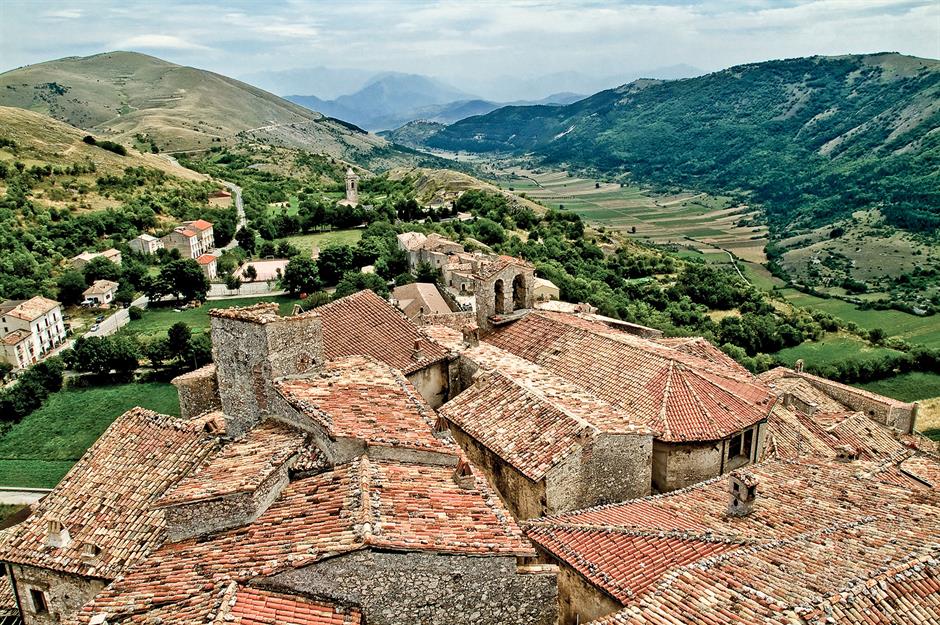
Riding his motorbike around Southern Italy's Abruzzo region one fateful day in 1999, Swedish-Italian entrepreneur Daniele Kihlgren chanced upon the medieval hilltop town of Santo Stefano di Sessanio and was instantly smitten by its unspoilt charm.
The historic town had been largely abandoned, with only 70 or so residents remaining. The town's long period of decline had kept developers away, perfectly preserving its historic character.
Not even a single modern building had been constructed, but the surviving structures weren't in the best of shape.
Daniele Kihlgren's Santo Stefano di Sessanio, Italy
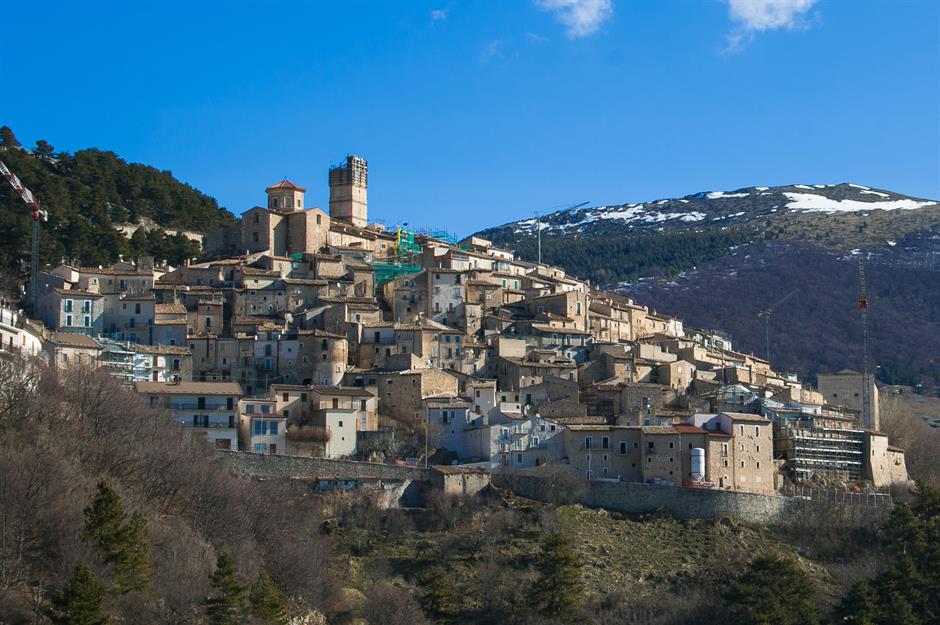
The wealthy scion of a family of cement magnates, Kihlgren vowed to restore the entire settlement and turn it into a "diffuse hotel", a concept he went on to pioneer.
The entrepreneur negotiated a deal with the local authorities, agreeing to pump millions into Santo Stefano di Sessanio to preserve its picturesque structures, in exchange for a ban on any new construction and the use of concrete.
A believer in conservative restoration, which aims to retain as many original features as possible, Kihlgren has since renovated 32 of the town's buildings to date.
Daniele Kihlgren's Santo Stefano di Sessanio, Italy
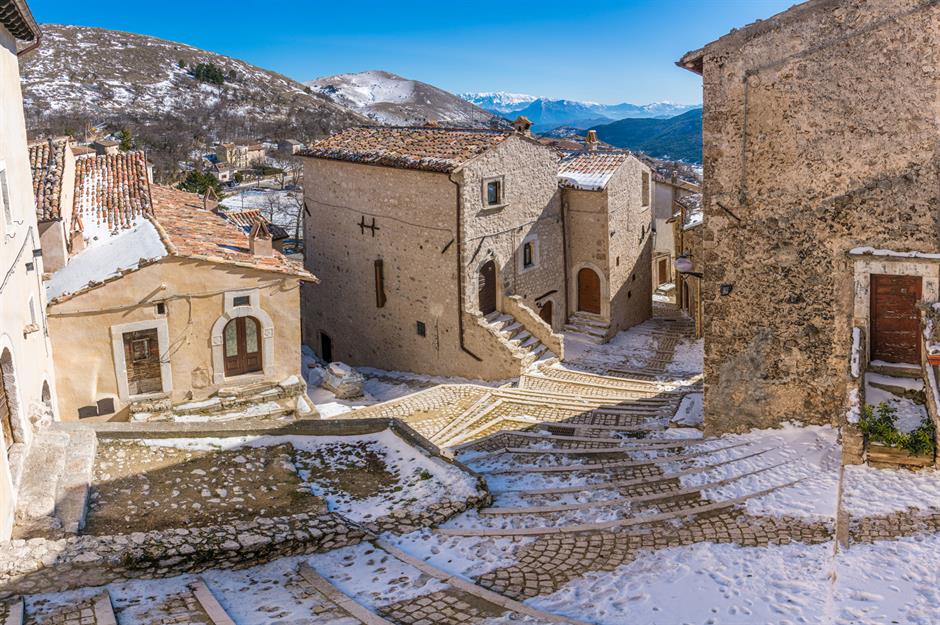
While several of these properties have been sold and now function as second homes, the bulk serve as accommodation for the Sextantio Albergo Diffuso, the innovative diffuse hotel which is scattered throughout the town.
Kihlgren bent over backwards to ensure authenticity, decorating the houses with furniture and artefacts from the region, talking to historians as well as some of the town's elderly residents to figure out how people lived there in the past.
Daniele Kihlgren's Santo Stefano di Sessanio, Italy
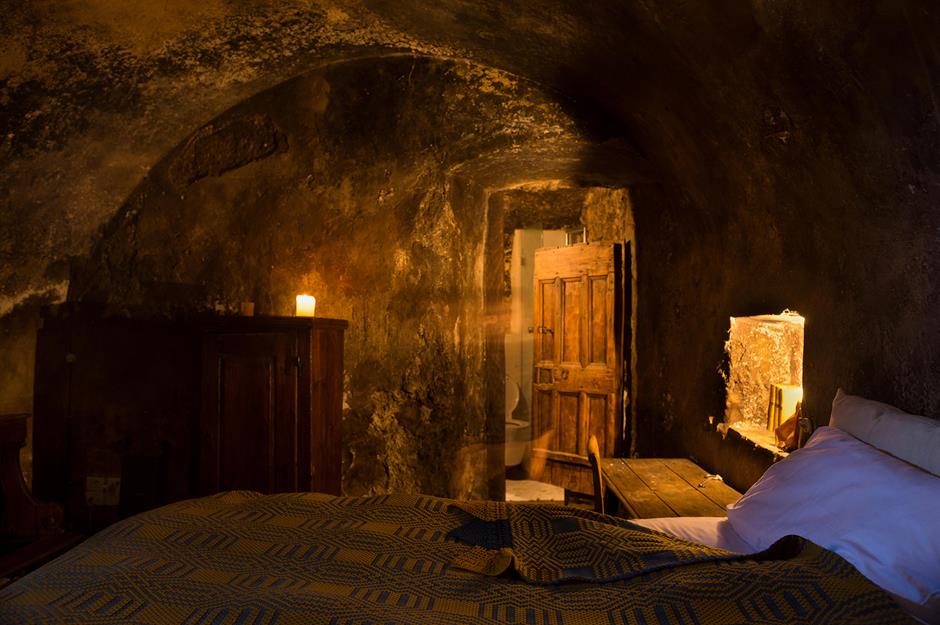
But the rejuvenation of Santo Stefano di Sessanio, which now has a population of 125, is just the start for Kihlgren, who is on a mission to revive as many struggling historic hilltop towns in Southern Italy as he can and bring them back from the brink.
The millionaire's latest project involves the renovation of Sassi di Matera's famous cave dwellings, which are being restored with the same ultra-sensitive conservation ethos in mind.
Brent Underwood's Cerro Gordo, USA
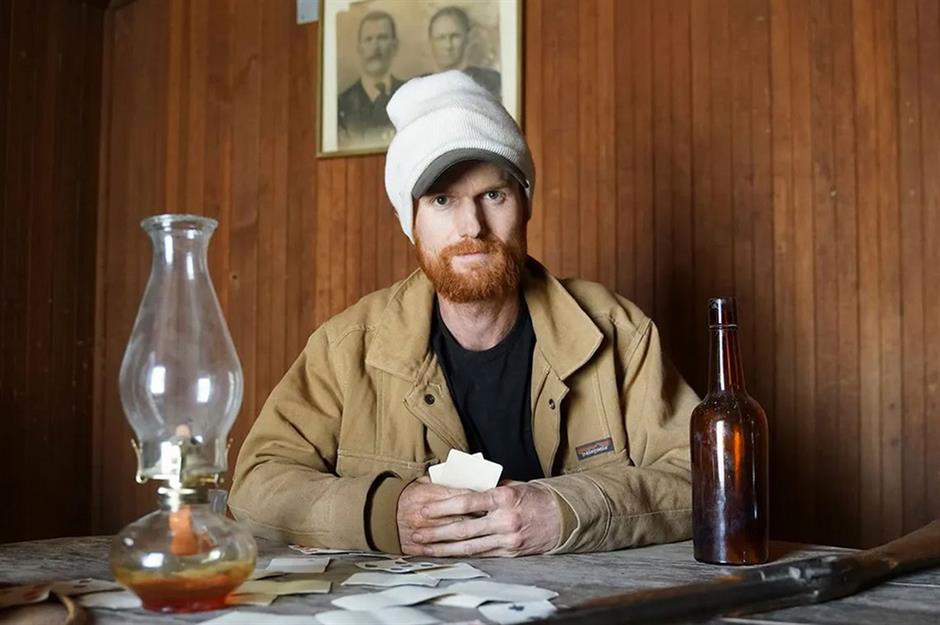
In 2018, marketing professional Brent Underwood got together with his friend Jon Bier to buy the Wild West ghost town of Cerro Gordo in California's Inyo Mountains, stumping up $1.4 million (£1.1m) for all its 360 acres (146ha), which were listed with Bishop Real Estate.
Pledging to recreate the 19th-century silver rush town as it was in its glory days, Underwood got to work renovating its dilapidated buildings.
Cerro Gordo sprung up in 1865, when vast quantities of silver were discovered in a nearby hill (hence the town's Spanish name, which means means 'fat hill' in English).
Brent Underwood's Cerro Gordo, USA
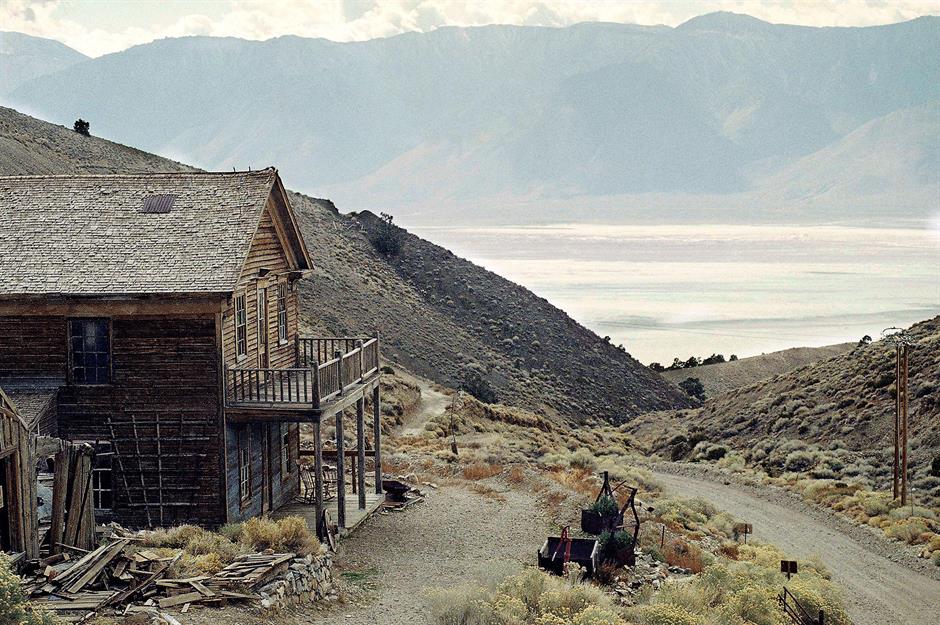
Two years later, prospector Mortimer Belshaw delivered the first cartload of the precious metal to Los Angeles, sparking Cerro Gordo's boom times. Demand from the town became so great, it's said to have played a significant role in LA's economic development.
Reflecting Cerro Gordo's swiftly accumulated wealth, a number of grand buildings were erected in the late 19th century, the finest of which was the American Hotel, dubbed Cerro Gordo's crown jewel.
But the town's pretty buildings hide an ugly past. Native Americans were forcibly removed to make way for the settlement, and by the 1870s it had become a hotbed of violent crime.
Brent Underwood's Cerro Gordo, USA
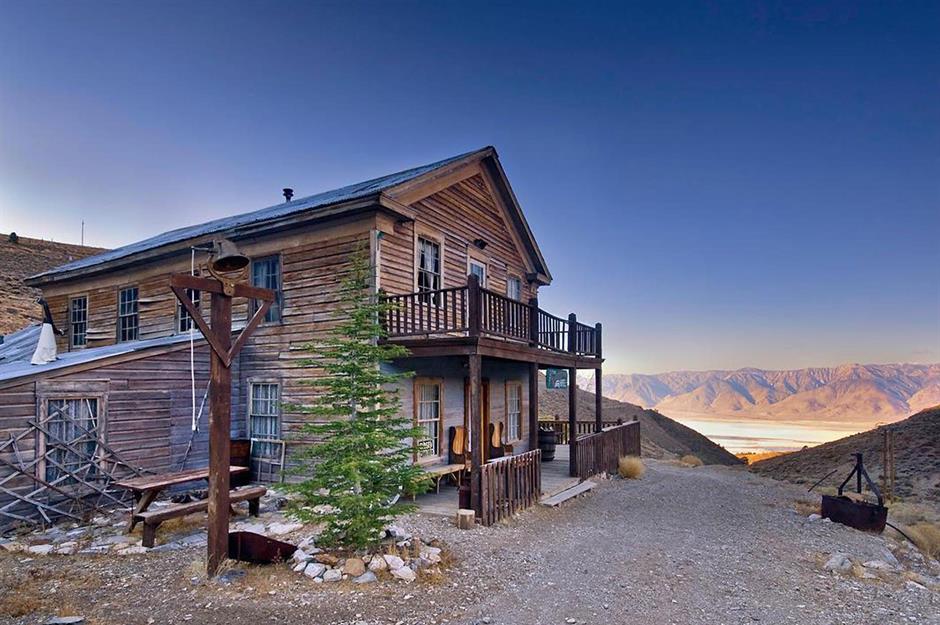
The mine's deposits dried up in the 1930s and the town was abandoned. Fast forward to 2022, which saw Underwood well on the way to restoring Cerro Gordo and fulfilling his dream of creating a living museum.
That said, his renovation journey, which the marketing exec chronicles on his YouTube channel, hasn't been the smoothest. For starters, Underwood was stranded in the town during lockdown with just a ghost for company.
Brent Underwood's Cerro Gordo, USA

However, the biggest setback came in June 2020 when the American Hotel caught fire and was burned to the ground.
Understandably crestfallen following the blaze, Underwood has spent the past four years rebuilding the hotel using the original plans, and is making a ton of progress renovating the town's other buildings, including the tin church, saloon and several houses and tiny cabins.
In March 2024, Underwood published Ghost Town Living, about his amazing undertaking and the skills he's learned along the way.
Nicholas Johnston's Bantham, UK

An old Etonian and founder of the Johnston Quarry Group, Nicholas Johnston was no stranger to running an entire settlement. His family owned Oxfordshire's enormous Great Tew estate, when he bought the village of Bantham in Devon, England, in 2014 for around $14 million (£11m).
He purchased on a whim, after stumbling upon the listing in a newspaper and recalling fond childhood memories of holidays in the area. A friend of former UK prime minister David Cameron and part of the so-called Chipping Norton social set, Johnston mopped up 728 acres (295ha) of land.
Nicholas Johnston's Bantham, UK
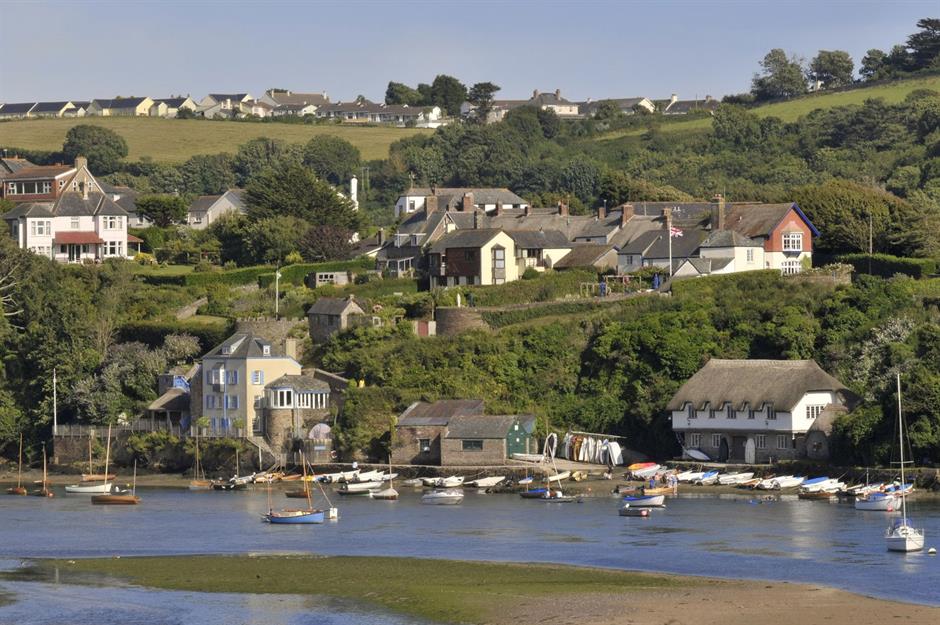
The sale included the beach and estuary, together with 20 cottages, some of which date back to the 17th century, and the nostalgia-inducing village shop. The local pub, however, remains in the ownership of the brewery.
From the get-go, villagers wondered how the entrepreneurial landowner would make his mark on Bantham. After all, the Johnstons had transformed the Great Tew estate, establishing the Soho Farmhouse hotel and members' club there and selling off properties to the likes of David and Victoria Beckham and Rupert Murdoch.
Nicholas Johnston's Bantham, UK
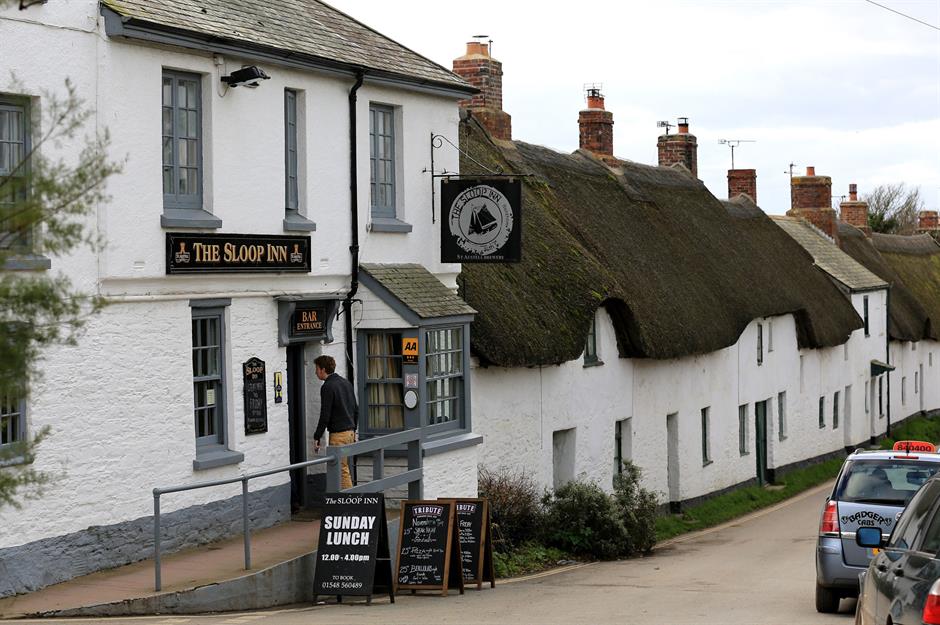
Some were becoming increasingly worried that the new owner would end up spoiling their seaside idyll.
Tensions came to a head in 2017 after the millionaire revealed plans to build a beach club, complete with a gym, pool and cafe, an underground car park and a boat restoration yard.
Furious villagers launched an anti-Johnston campaign, and the Save Bantham pressure group was formed. A villager reported Johnston to the police for breaching lockdown restrictions during the pandemic.
Nicholas Johnston's Bantham, UK
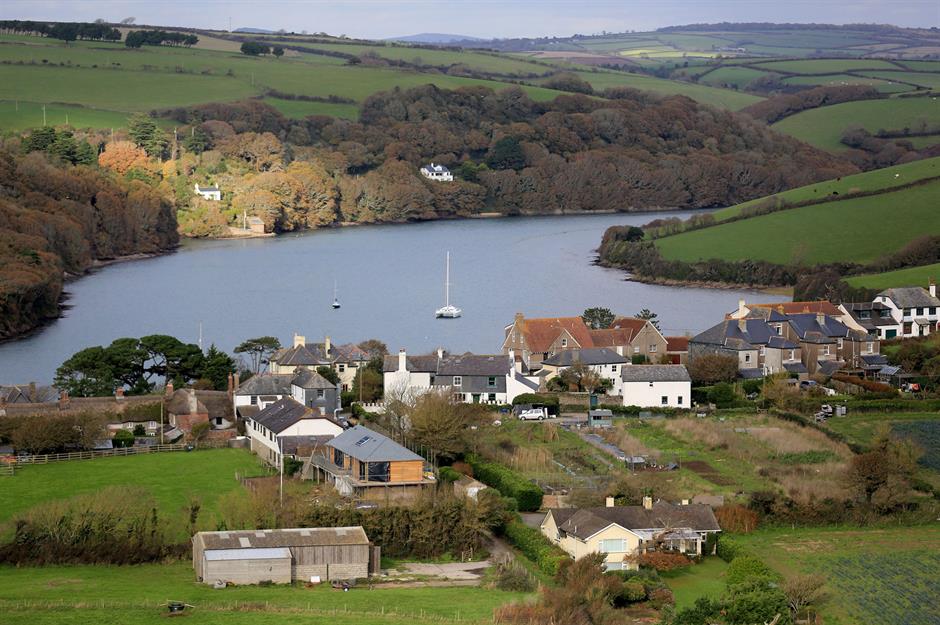
Despite the hate from some quarters, Johnston also has plenty of fans in Bantham. Plus, he insists the plan was never a serious proposal, just an idea floated to the parish council after a “blue sky-thinking” brainstorm.
The landowner's actual proposals are reassuringly sustainable and involve the construction of a glamping park with yurts and a small housing development away from the beach, using local materials like stone and thatch.
Pham Dinh Nguyen's Buford, USA
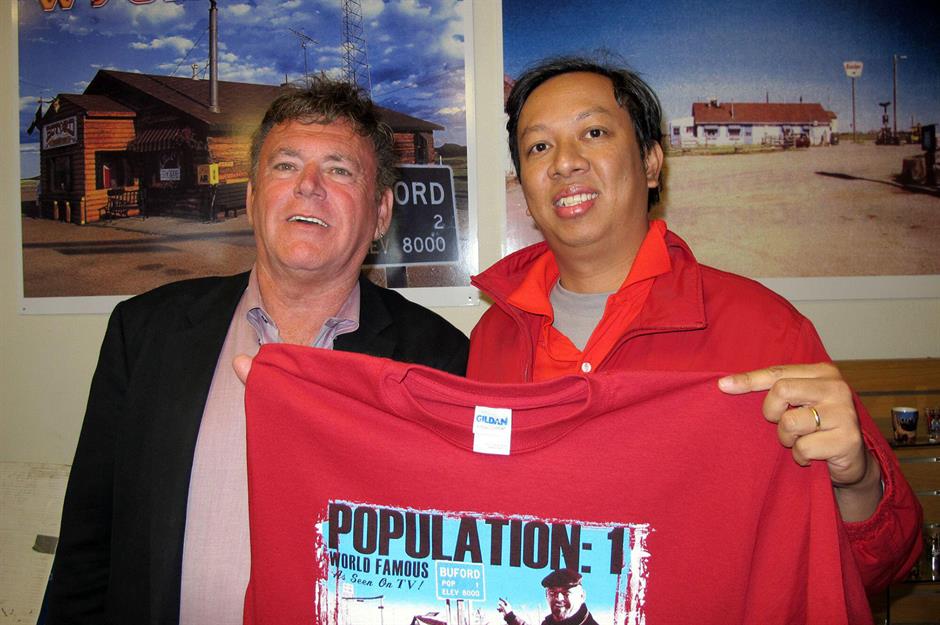
Vietnamese coffee baron Pham Dinh Nguyen hit the headlines in 2012 when he acquired the tiny Buford Trading Post in Wyoming.
America's smallest town, with a population of just one, and the highest on Interstate 80, the 9.9-acre (4ha) settlement was auctioned off by its long-time lone resident, Don Sammons, with Nguyen casting the winning bid of $900,000 (£699k).
Pham Dinh Nguyen's Buford, USA
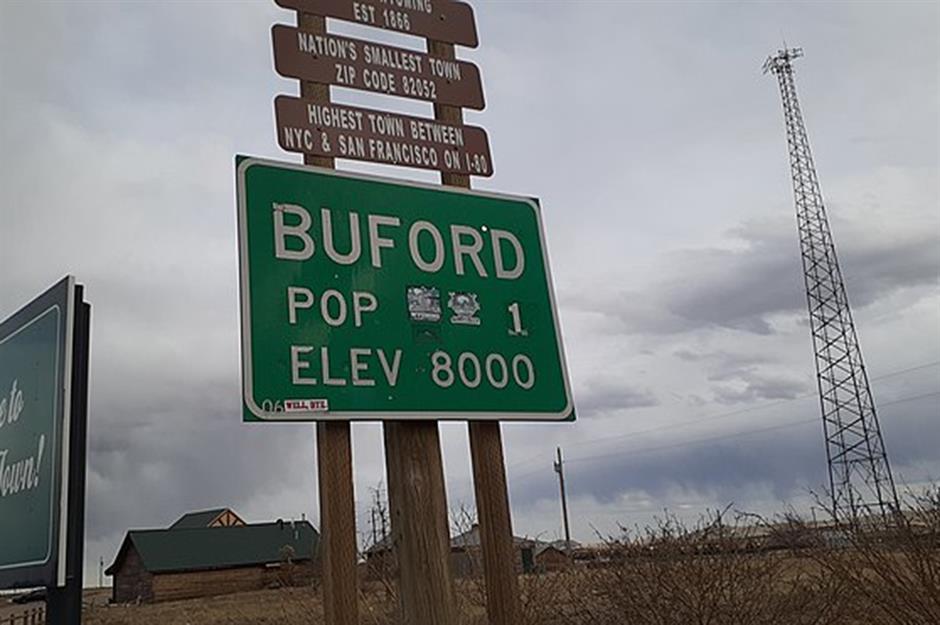
As you'd expect, there isn't a whole lot going on in Buford, which is made up of a gas station, a convenience store and a three-bedroom home.
That said, the small town has a rather interesting history, starting out in the 1860s as a military outpost and becoming fairly developed by 1900 with a post office and school. At its peak, Buford's population stood at 2,000.
Nguyen bought Buford as a publicity stunt to promote his PhinDeli coffee brand, and plug it he did by adding PhinDeli Town to its name and selling the coffee by the truckload in the convenience store. Nguyen has rarely visited, and the guy managing the town lived outside of its limits.
Pham Dinh Nguyen's Buford, USA

The only resident was the convenience store attendant. He ended up quitting, along with the manager, and in 2018, the convenience store was shuttered and the gas pumps switched off.
With the business kaput or on hold at best, Buford's future seemed uncertain, and the local press took to calling it a ghost town.
Pham Dinh Nguyen's Buford, USA

And this is how things remained, at least until very recently.
According to reviews on Google, the gas station and convenience store are now back in operation, following a refurb. Nguyen appears to still own the town as no sale has been recorded, but some of the PhinDeli branding has been removed.
Saji Daniel's Foxburg, USA

With ties to the founding of the Quaker religious movement, this idyllic riverfront estate, in the historic town of Foxburg, Pennsylvania. dates to 1796, when the Fox brothers purchased 6,600 acres (2,670ha) of land from the Commonwealth of Pennsylvania along with their two brothers-in-law, with it eventually becoming known as Fox Mansion.
In the 200 years since the mansion was built, there have been many additions made to the Federal-style property, which spans three floors.
Foxburg, however, which was once a thriving railroad town, had sadly seen a decline in its economic fortunes. Aside from one “greasy spoon,” there was almost nothing on the unpaved main street.
Saji Daniel's Foxburg, USA
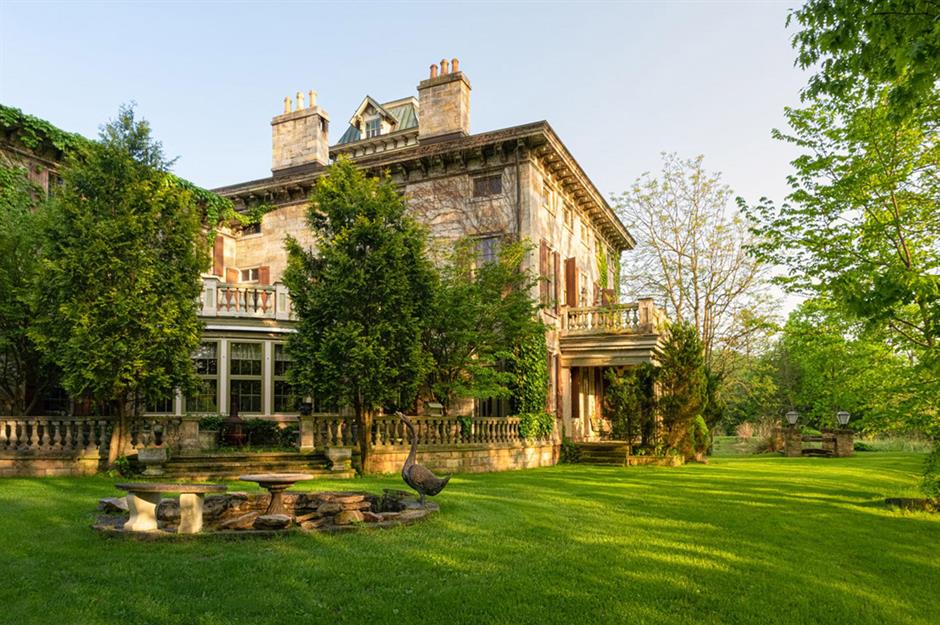
According to Mansion Global, in the late 1990s after retiring from his Cleveland medical practice, Dr Art Steffee and his wife Patricia paid around $5 million (£3.9m) for the vast estate, as well as the once-thriving former railroad town of Foxburg nearby.
After renovating the estate, the doctor spent decades and about $6 million (£4.7m) rebuilding the town, purchasing dilapidated buildings, building a small hotel, a restaurant and a pizza shop, plus turning the existing 'greasy spoon' into a winery and starting a tour business. He also launched a gallery and renovated an old concert hall.
Saji Daniel's Foxburg, USA
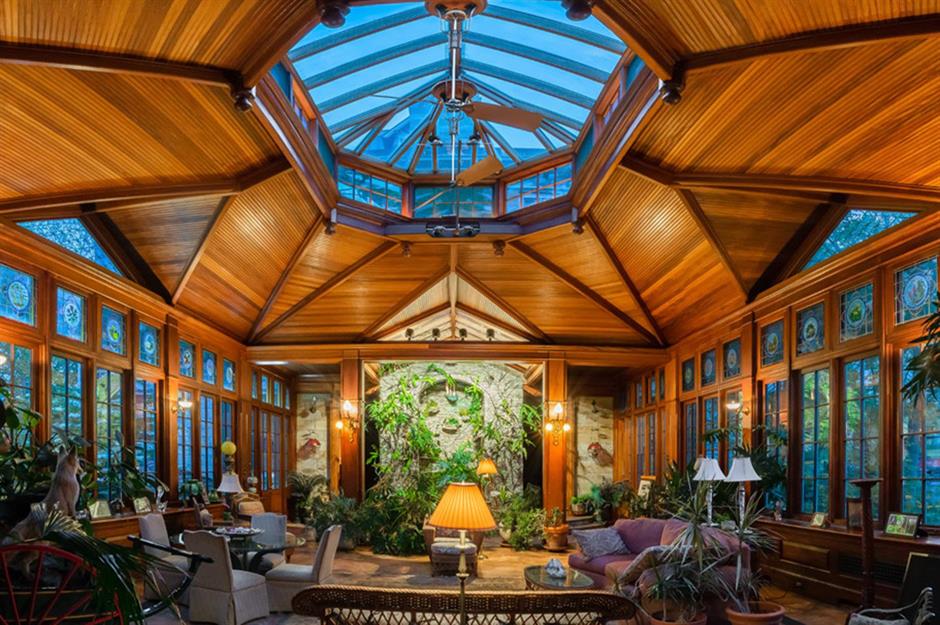
However, the vast holdings soon became too much for the ageing doctor, and it was time to bid Foxburg farewell. Last listed for sale for $15 million (£11.8m) in 2019, the house and town were purchased by a Cleveland couple with big plans.
In 2020, businessman Saji Daniel and sports manager Shannon McGauley Daniel fell in love with Foxburg, and while they had originally been looking for a much smaller project, they decided to tackle the charming historical town.
Saji Daniel's Foxburg, USA
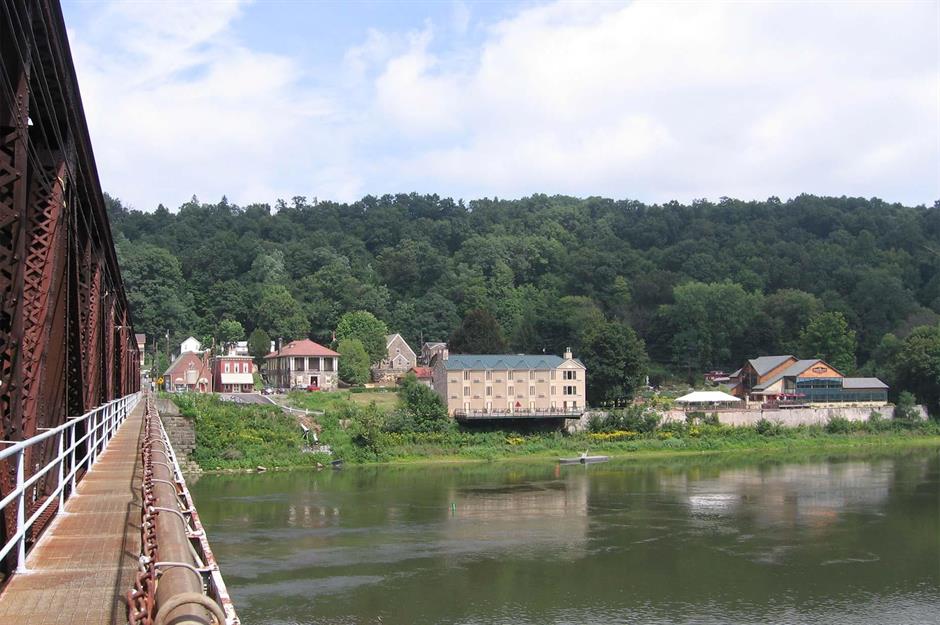
Keen to maintain Foxburg’s quaint atmosphere, their first move was to hire a consulting company to devise the best strategy for development. When it comes to the town of Foxburg, the Daniels' ongoing goal is to create jobs and get the community thriving again.
The biggest challenge so far has been finding workers to staff the local businesses, and the couple have been called upon to fill in on occasion, even helping to bottle wine at the winery or make beds at the hotel. The couple are certainly taking their town ownership seriously!
Loved this? Take a look at these real-life property stories
Comments
Be the first to comment
Do you want to comment on this article? You need to be signed in for this feature